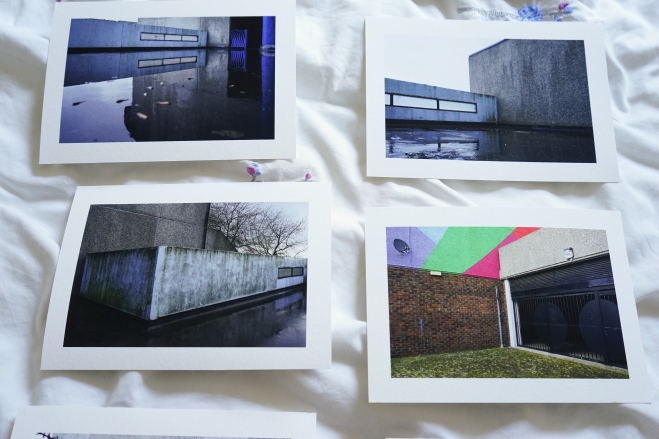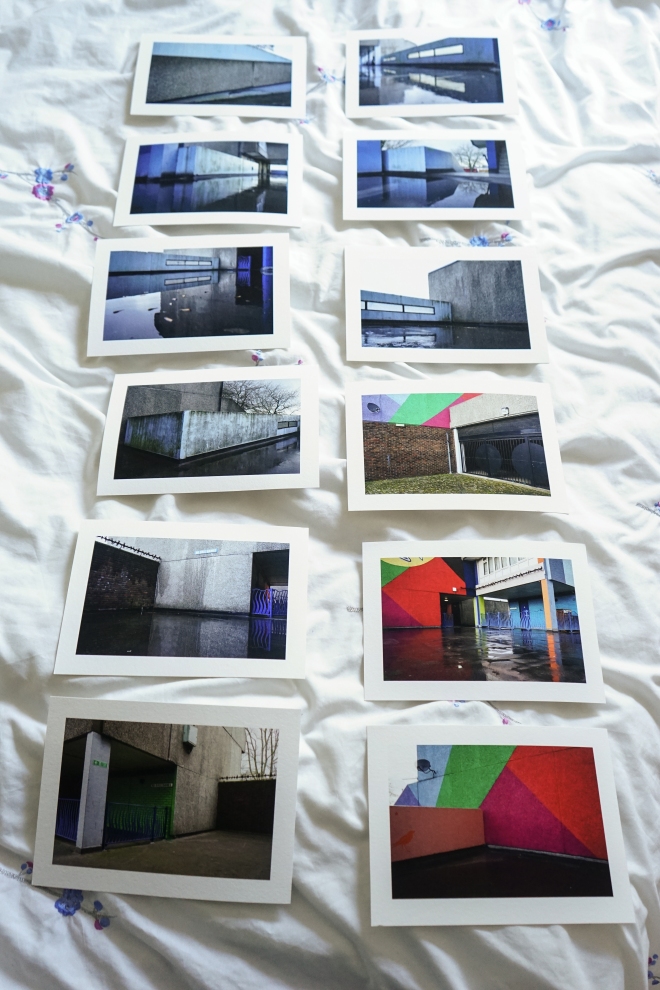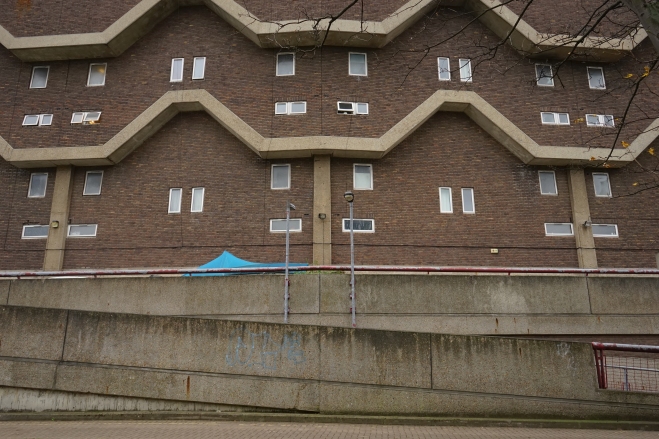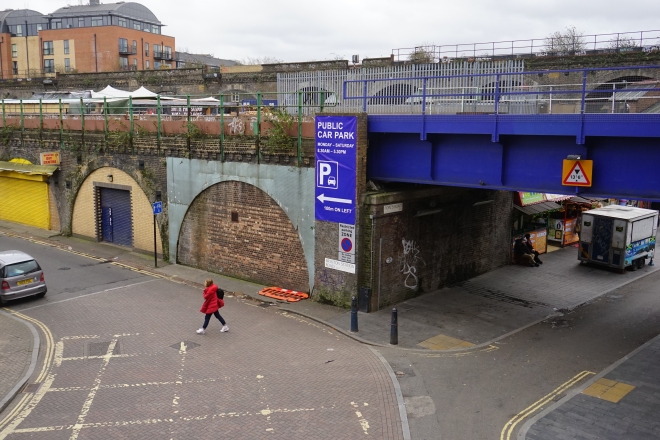Introduction
For the following assignment, I selected the Brixton area in south London as my location. I visited the area over a few weeks and shot a variety of subjects, locations, and buildings. Over the period of time I ‘covered’ the area I found that I gradually developed a narrative and theme to focus on for the assignment brief. As this specified that the images would be pitched to a thoughtful travel publication, I looked for a strong visual narrative through the final images I would be making my selection from.
From the first walk around the area with my camera, I noticed immediately the juxtaposition between the old, independent businesses around the area, particularly underneath the railway arches on Atlantic Road and the markets on Electric Avenue, and the new forces of regeneration in the form of Network Rail’s apparent intent to refurbish the arches. However my subsequent walks around the area revealed a more complex narrative, and with my final selection I set out to show a greater insight into the area beyond the obvious tensions created by the regeneration initiatives. Also in keeping with the brief, I tried to incorporate a variety of images that showed the various techniques in camera handling, observation and reaction explored in the module so far.
The initial selection
I made an initial selection of 12 images from around the 50-100 frames I shot in Brixton over a period of 4-5 weeks. I thought this initial 12 best captured the narrative I was trying to convey. All images were shot with my Sony digital camera and a 28-70mm zoom lens. I found this gear choice gave me a simple but flexible approach, and is notably the first time I have used digital for an assignment on this course. The approach I chose – walking around the location a few times over a period of weeks – meant that using film would have delayed the completion of the assignment considerably, and also have interfered with the momentum I gained from each visit to the area. Whilst I find the film process useful and sometimes preferable to the instant gratification of digital, I felt that seeing the images immediately once I had arrived at home allowed me to appraise what I had captured that day, and to make notes on possible themes and narratives to focus on during my next visit.
Images were therefore shot from a variety of focal lengths; however looking at the EXIF data from the RAW files showed that I did not go wider than 35mm, and went up to the maximum 70mm my zoom lens allowed. I did not do much editing in Lightroom beyond the exposure and contrast sliders, but also did some cropping that in some cases affected the composition of the finished images. I also stuck with the traditional 35mm aspect ratio and colour palette to create a more consistent feel to the set, baring in mind that the final set would be published in a magazine. The inevitable overcast days that are typical of England at this time of year were also welcome in helping to create a consistent feel to the images, despite them being captured at various times over October-December 2015.
The first three images below were taken in residential areas of Brixton, and I feel they capture something of the essence of the community’s character. The first shot is of Loughborough Park and the Guinness Trust, which acts as an advocate for the local residents in the estate which is under threat of demolition so the developers can move in. Some development can be discerned in the background behind the Guinness Trust building and the original flats, and shows something of the conflict present in the estate. The green boards on the left hint at the development taking place, and the old man with shopping trolley could perhaps be taken to symbolise the resistance of the local residents to the developers. In terms of composition, the man on the left draws our attention and acts as an initial focal point within the frame. However the green boards, the Guinness Trust building and the new development in the background create a multi-layered image with a strong narrative that I feel sets the tone for the remainder of the series.
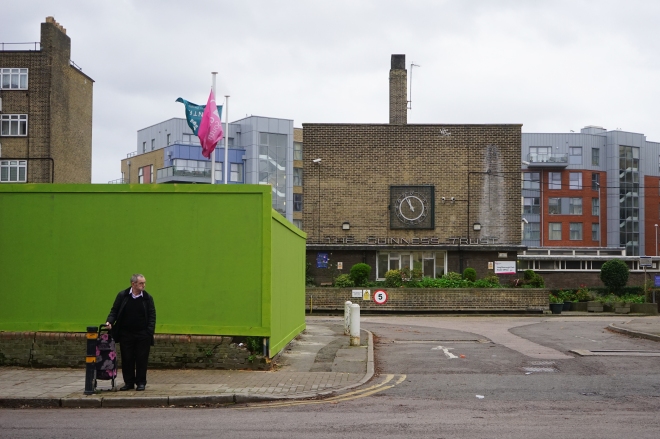
The second image below shows the ‘Pop Brixton’ development. The area is an initiative that uses old shipping containers and aims to encourage local residents to get involved by offering affordable rents or subsidised loans for start up businesses. The containers range from housing street food stands, restaurants, bars, clothing shops, jewellers, bakeries and even a small stage for music and stand up comedy performances. It is undoubtedly a product of the regeneration that has affected the area in recent years, but perhaps shows a more positive side to what such initiatives can do for Brixton. The image itself utilises the “anonymous” figure approach to photographing people in place. The figures entering the development form part of the overall photo which features the shipping containers and a 1960s residential tower block in the background. Along with other images of the set, I noticed that this image display an independence and ingenuity on the part of the community in Brixton – an area that is traditionally a working-class area of London, but has seen vast amount of social upheaval over the years. This theme is something that resonates throughout the set, but is a trait that can also help to explain the local community’s rejection and mistrust of initiatives from outside developers such as Network Rail.
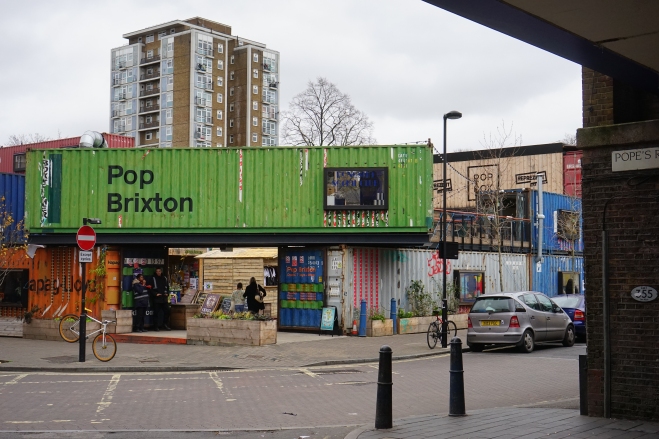
The next image below is in the same vain as the image of ‘Pop Brixton’, and shows more of the ‘can do’ attitude of the local community that I observed. This is a clearly a communal area, and it is the recycling of materials for a public space that shows the ingenuity of the community that uses it, for instance the mannequins and wooden platforms that surround the space.
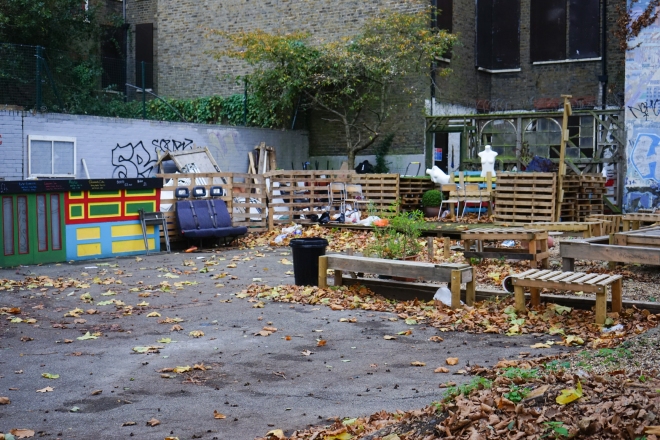
The preceding images below were taken below the railway arches on the Atlantic road. As mentioned the arches are an area of particular conflict in the area due to the stated intention of Network Rail to regenerate the arches and potentially force away the small businesses that have operated out of the shops below the railway.

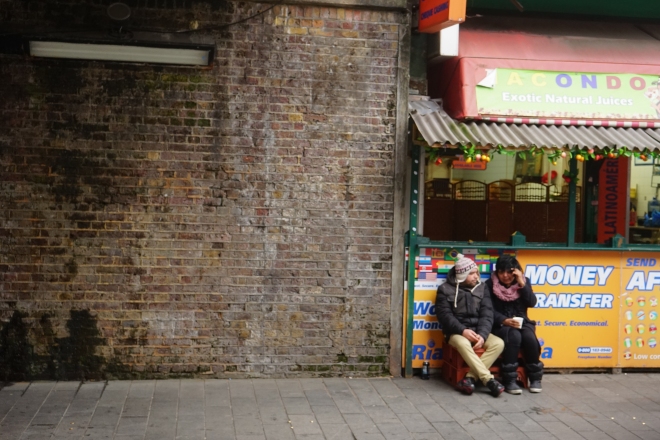

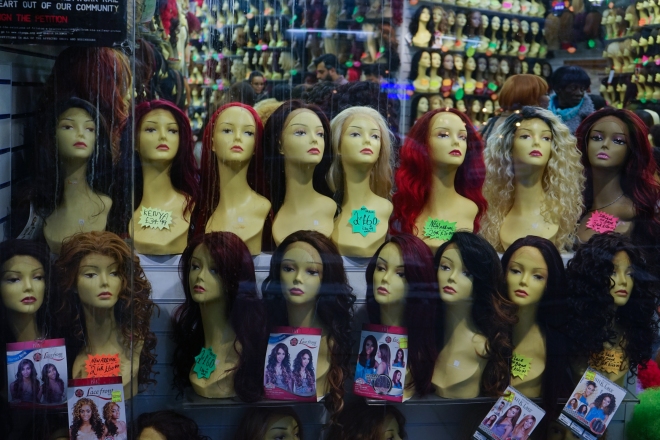

The images I chose vary in camera handling, composition and subject focus. They vary from showing the type businesses that reside beneath the arches, for example the wig shop and carpet shop, to showing the people that use the space particularly the delivery man and the two people sitting in conversation in the first and second images respectively. The uniting strand in them is that they show a thriving community that still exists beneath a railway that presumably thousands of people use to commute to central London everyday, probably unaware of what exists beneath.
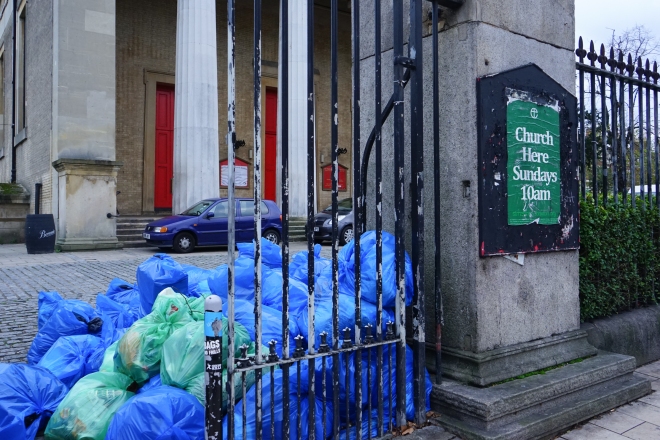
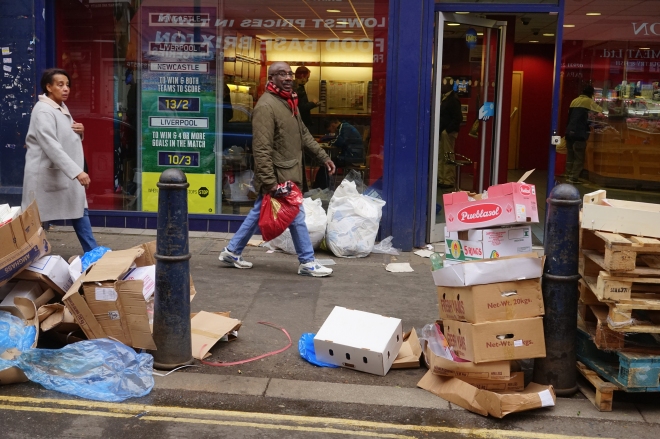
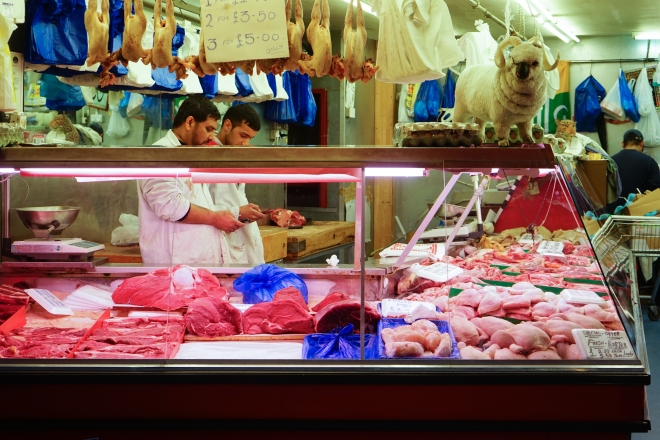
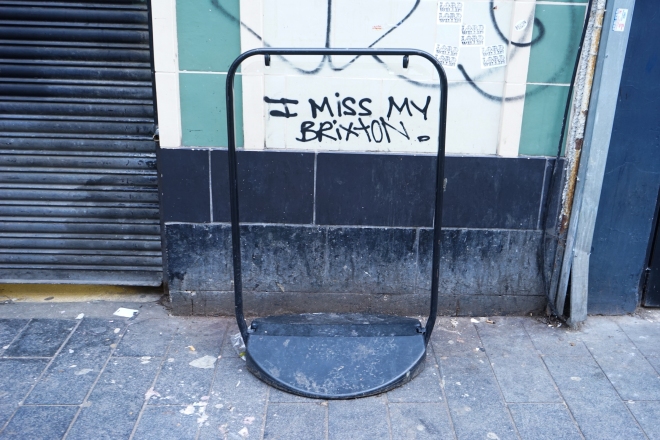
The final images that I chose for the initial selection are varied in location.The first in the sequence is of a church on the main road not far from the tube station and opposite the famous music venue, Electric Brixton. I chose to include it as it shows something about the community that still resides in Brixton, and the fact that the church was packed when I visited shows that many of the local residents are still very religious. The final three are shot on the famous Electric Avenue, which resonates with independent markets and butchers, and is always somewhat chaotic and dirty. I thought the image of the two butchers busy on their phones reveals a quiet moment amidst the chaos. The graffiti in the final image above also perhaps tells a story particularly when placed amongst the chosen images of this set. Is the graffiti alluding to something lost in the area? Are the authors talking about an end of an era? It is an interesting photo to finish on certainly within the context of the narrative the images reveal.
The final selection
In keeping with the assignment brief I cut the initial selection of twelve images to a final six. I would have preferred to have kept the final set to the twelve selected above and cutting those to six has been a difficult exercise, particularly as I feel the twelve photo series works so well.






Cutting the selection of twelve down to six was certainly tricky, especially when covering an area as diverse as Brixton with its vibrant and active community. The final six I felt show the essence of the local community as one of ingenuity (as evidenced by the ‘Pop Brixton’ and Loughborough park images), and of unique use of space (the use of the arches as a public and retail space). The final image ‘I miss my Brixton’ is particularly illustrative – the local residents perhaps face a near constant struggle to adapt in the face of forces of deprivation and regeneration, but the graffiti also shows that many take pride in the character of their community.
Conclusions
Overall I felt the final images I produced for this assignment were successful in capturing what I wanted to convey as the ‘essence’ of Brixton. Although I would liked to have presented the initially selected twelve as the series, the final six still work well together and succeed in presenting something of the area whilst maintaining visual variety. I would have liked more access to areas such as Loughborough Park, perhaps focusing more on the people who reside there and capturing portraits and something of their personal stories. However this assignment was more about capturing the community as a whole, and including the space in the frame was just as important as the people. In fact for some images including human subjects was almost unimportant, for example the ‘Pop Brixton’ images which makes use of the anonymous figures.
Without an end-result in mind, I might have approached photographing Brixton in a much less focused way. In fact the resulting images may have been much more cliche – including perhaps the inevitable ‘street portrait’ – and less focused on conveying a narrative. I may also not have revisited the area over a few weeks and not taken the time to walk around and to get to know the place. I found this approach very useful in forming ideas and finding a narrative to tie a finished set of images together. Having a clearly defined goal when shooting a project is a vital lesson I will takeaway from this assignment, and is certainly something I will prioritise when shooting any future project.
